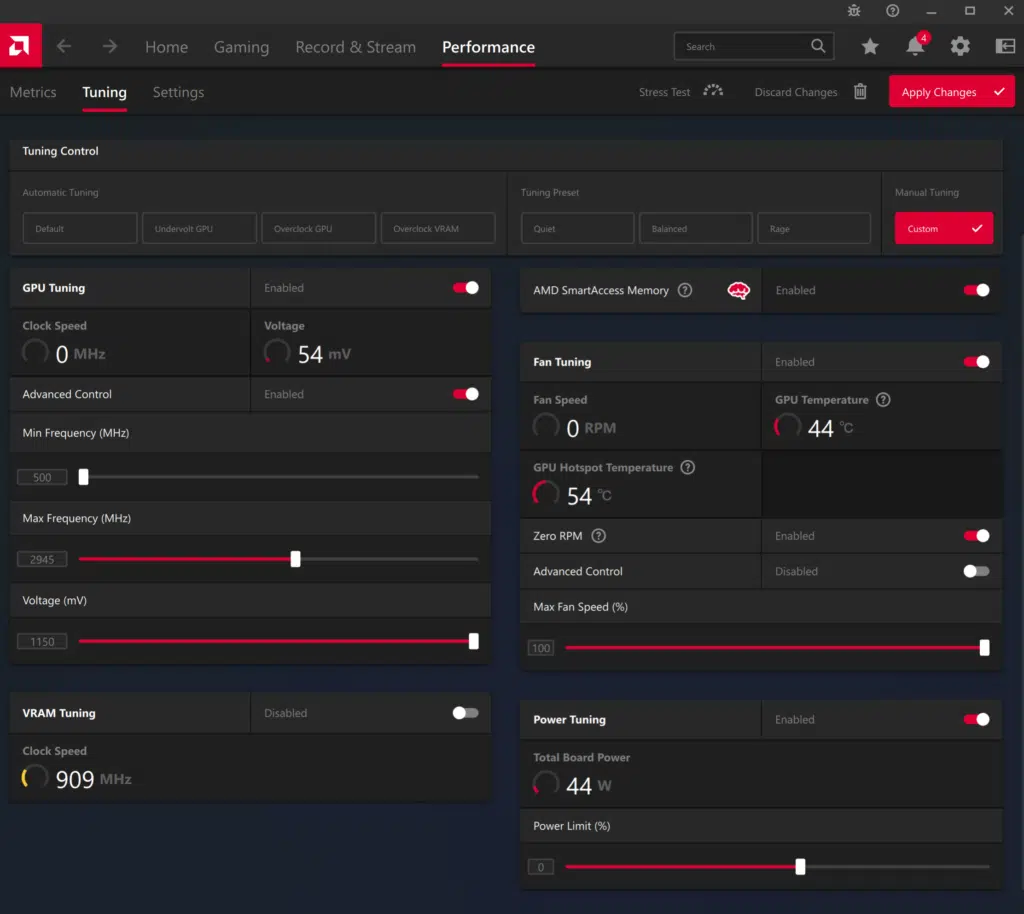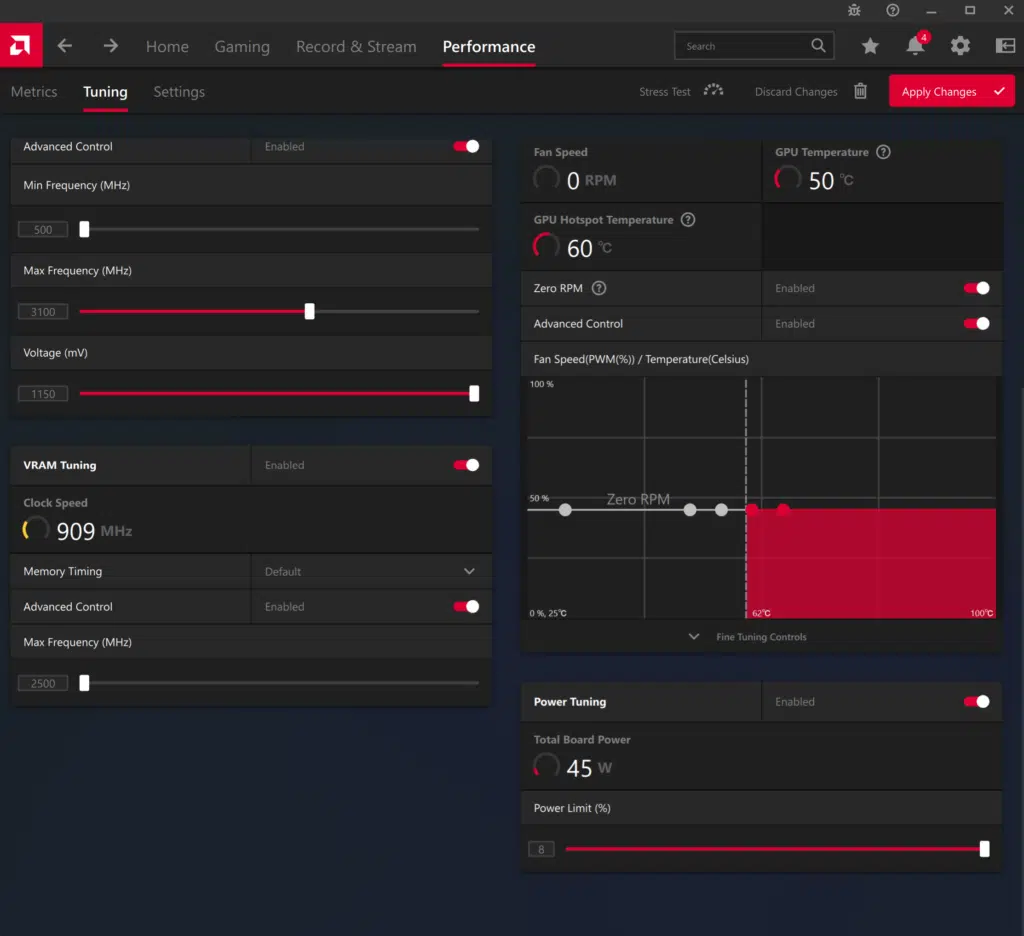Overclocking MSI Radeon RX 7900 XTX GAMING TRIO CLASSIC
There are some unique design features of the RX 7900 XTX GPU chip that make the discussion of overclocking quite interesting. There is a nice review of overclocking nuances of this video card located here. As the article states, the RX 7900 XTX has two clock domains; a “shader clock” and a “front-end clock”. Both are integral in the graphic displayed. Both are dynamic and will adjust to the game’s demands.
For this reason, we have generated two charts for this overclocking review. These particular charts were created by using the logging function of HWiNFO64, as it has the capability to distinguish and capture data for these two clocks. To clarify this we also included the usual GPUZ chart to demonstrate the differences.
For overclocking the MSI Radeon RX 7900 XTX GAMING TRIO CLASSIC we used the performance software included in the current version of AMD’s Radeon Software. Here we can adjust the GPU clock frequency maximum, memory frequencies, fan cycles, and power target. The GPU core voltage is maximized by default.
We set the GPU frequency to 3100MHz, the fans to 50% and the power limit to its maximum of 8%. Below you will find the settings used for overclocking testing, the top screen capture is the AMD Radeon Software default. Overclocking memory has a negative effect overall, so we decided not to overclock the memory at all.
If you recall, the GPU Maximum Frequency is just a limit setting. It does not guarantee that the GPU clock will match what is set there. The maximum reached is determined by a number of factors we cannot adjust.
Front End and Shader Clock performance
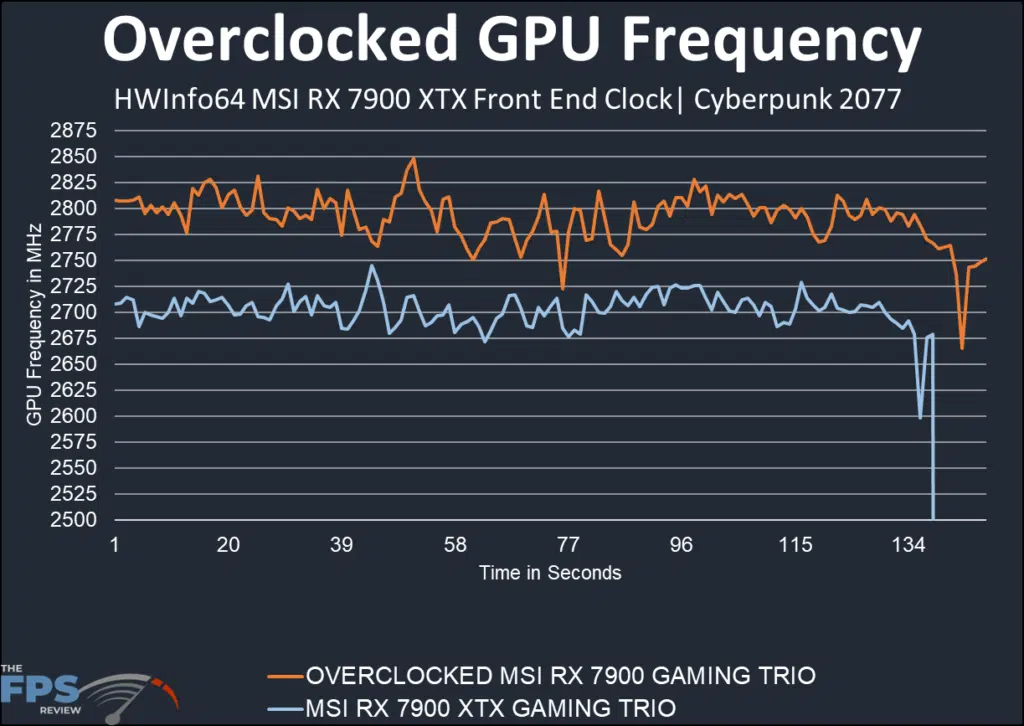
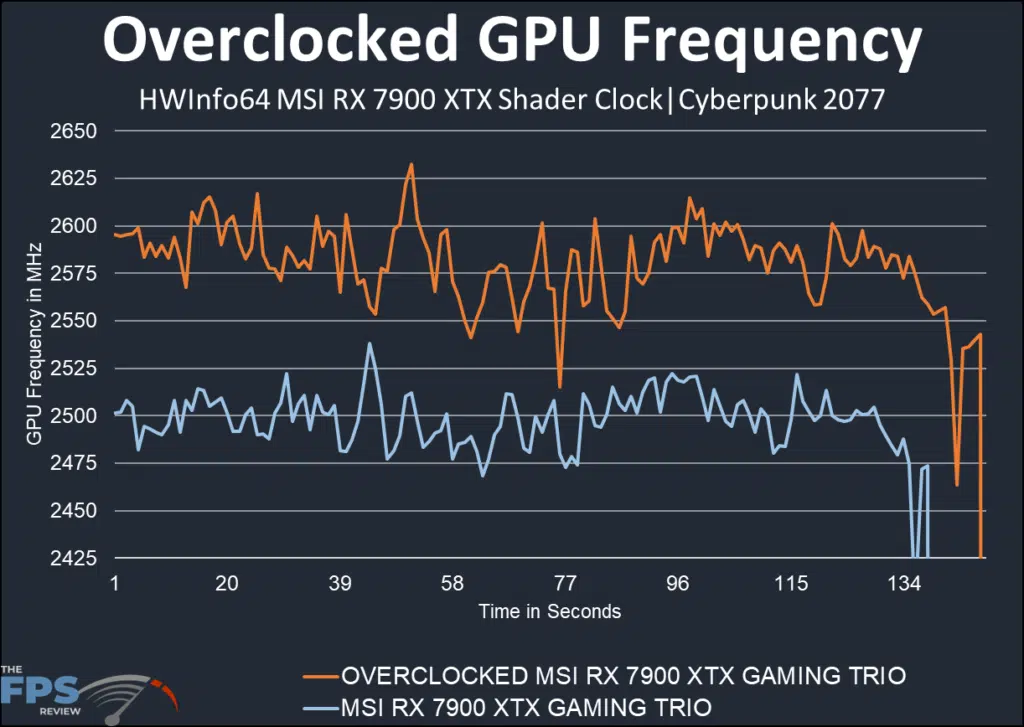
The charts above show the default and overclocked frequencies. You can see that the Shader clocks are lower than the Front End clocks. The baseline Shader clock resides near or at the advertised reference “Boost clock” frequency. It increases to an average of 2580MHz or a 3% change.
The baseline Front End clock is greater than the advertised “Boost clock” and “Game clock” frequencies. The default clock is 400MHz over the reference “Game clock” or 17% out-of-the-box. Overclocked the Front End clock reaches an average of 2791MHz or 21% above the reference “Game clock”. There is a 3% difference between the default and the overclocked Front End clock, mirroring the results of the Shader Clock.

Above you can see the same benchmark data recorded in GPUz. Given subtle chart changes and the manual nature of the benchmark, it appears that GPUZ logs the Shader clock frequencies we discussed.

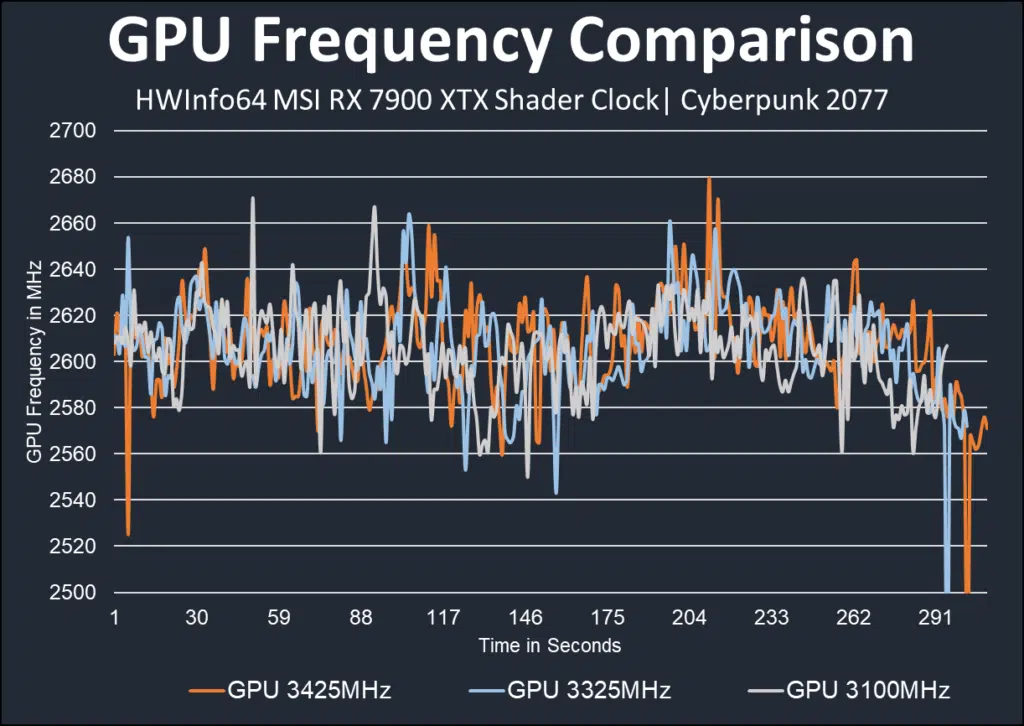
As we were running the benchmarks looking for the “sweet spot” for overclocking the MSI Radeon RX 7900 XTX GAMING TRIO CLASSIC we noticed that no matter what we selected for a frequency maximum, the FPS was always the same (as long as the video card was stable).
So……what is recorded above is manual benchmarking at three different maximum frequencies in the Adrenalin Performance software. You can see, barring differences in the manual nature of the benchmark run-through, the clock frequencies are essentially identical. That is why we selected 3100MHz for the overclock testing frequency. It simply doesn’t matter what you do in the software, the GPU will only run where it wants to. This speaks to a hard top limit in the GPU, BIOS, or software.
The video card was fully stable at all the listed frequencies. The fans were set at 50% which was very quiet and the GPU and “Hot Spot” were cool. There was no concern about temperatures, which speaks well of the MSI Radeon RX 7900 XTX GAMING TRIO CLASSIC heatsink and fan designs.

